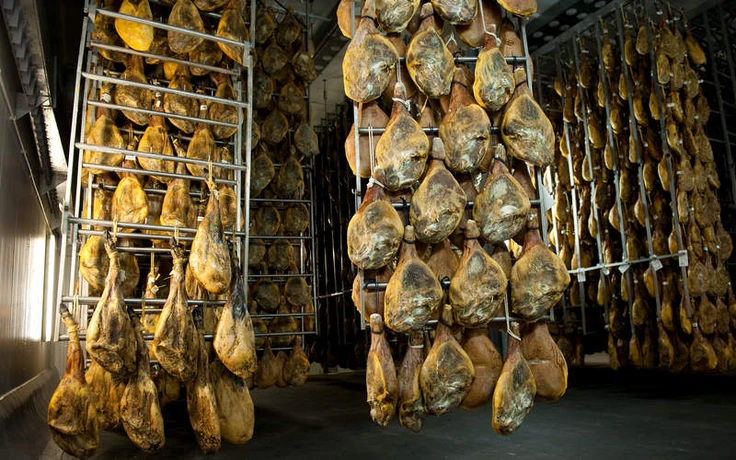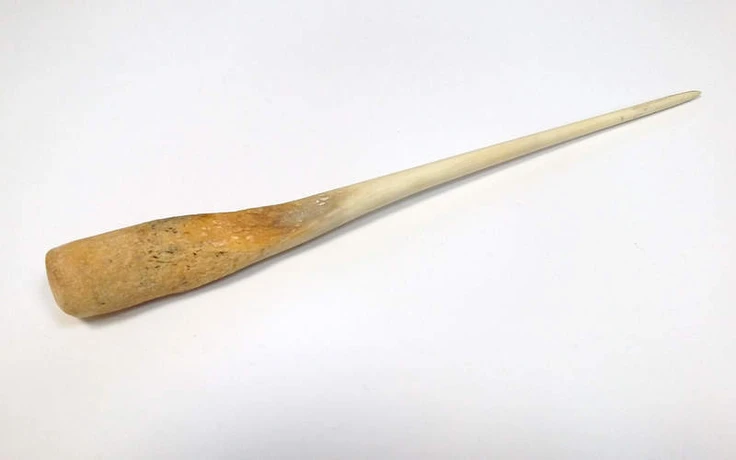The "ham sniffers" always follow their nose

The Serrano ham matures for at least eleven months until it has reached its typical taste with a mild nutty note and the meat is wonderfully tender.
The curing time of the hams depends largely on their size, the quality of the meat and the climate. The required maturing time can vary from piece to piece. Consequently, each ham must be checked individually. In addition to many years of experience, a great deal of knowledge and expertise, two things are particularly important in this work: a good nose and a keen sense of smell.
At Bell España in Casarrubios del Monte, Spain, four employees check between 1,500 and 2,000 hams every day. they are called "ham sniffers" - or "caladores" in Spanish - because their job consists of using their senses to examine the hams and determine their degree of ripeness. They then decide on the further processing of the individual pieces.
The quality of a cured ham can be determined by various characteristics. The outer layer of fat and the discoloration of the surface provide information on whether the meat is fully dried and matured. However, the most important indicator is the smell coming from inside the ham. To determine this, the caladores use a so-called "cala" ("punch" in German). The tool, not unlike an awl, is made from an odorless material. Certain precious woods or cattle bones are particularly suitable for making it. The cala is pierced into the ham at the level of the joint bone. The smell that sticks to the cala gives the caladores information about the degree of ripeness of the meat.

Fully matured hams, which are sold whole, are sorted by weight and prepared for packaging. If the hams are too large or have external blemishes, they are sold open or, after the bone has been removed, cut and packaged in portions. An unripe ham is returned to the maturing process.
Every ham is recorded electronically, as is the information about its degree of maturity and further processing. This contributes significantly to traceability as soon as the pieces leave Bell España.
"The work of the caladores not only makes an important contribution to quality assurance," explains Rodrigo Fernandez, Marketing Manager at Bell España, "it also provides information about the performance of the producers from whom we source the cured hams." For this reason, the caladores not only carry out quality control at the main site, but also on site at the producers' premises.

The work of the caladores is therefore essential to ensure that customers receive exactly the quality they expect from a product such as the high-quality Jamòn Serrano. It is precisely this key position, the responsibility associated with it and the uniqueness of the work that makes the caladores passionate about their profession. For them, it is an opportunity to make a significant contribution to the good name of Bell España ham and to contribute their knowledge, experience and expertise to the company.